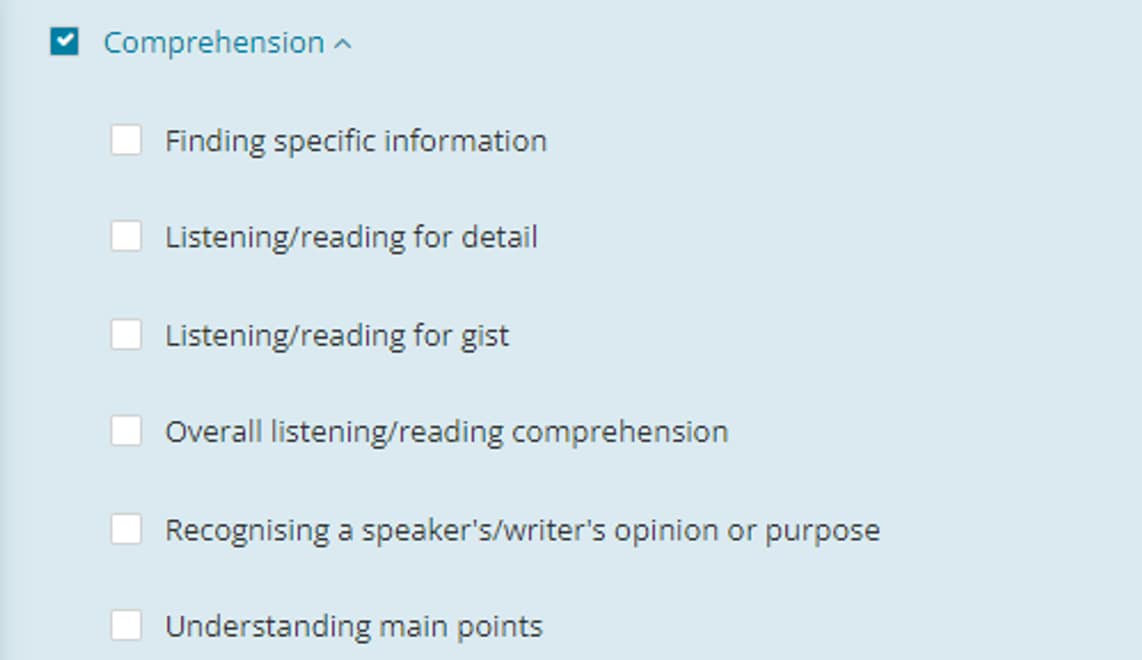We can easily personalize the activity to include overall listening by adding a question before students are asked to solve the exercise:
Are the speakers a couple? or, Are the speaker's family?
The first question gets a No for an answer, whereas the answer to the second one can lead to a discussion. This is a good thing for it can generate a debate in which students have to account for their answers, which they can do after they complete the exercise.
In a similar matter, the GSE indicates that at this level, students can extract key factual information such as prices, times and dates from a recorded phone message (at level 35). For learners who are ready to expand their abilities further, additional questions can be posed to extract specific factual information, as indicated by the GSE for a level slightly above A2:
Through such adaptations, we cater to different proficiency levels within the same group, offering a degree of challenge that is suitable yet stimulating. We can also consider these learning objectives for listening when analyzing the items in a listening activity. Let me describe some possible scenarios.
Addressing challenges and enhancing motivation
What happens when the tasks set before young learners at the same A2 level don't offer the necessary support? The GSE guidelines stipulate that learners should have access to materials and certain assisting elements, like visuals or supplementary information. It's our responsibility as educators to incorporate this support, thereby aligning the exercise with the learners' capabilities.
Occasionally, certain tasks may exceed the current level of the students. For instance, students may be asked to make basic inferences in simple conversations on familiar everyday topics (level 38). A stratagem I employ involves segregating items into 'A' (level-appropriate) and 'B' (slightly more advanced). This provides students with a clear understanding of their expectations and offers an optional challenge.
If they do not get them right, they do not feel frustrated since they know these items are somewhat beyond their level but if they do at least one correctly, this works wonders on their motivation, which has a positive impact on learning. The more motivated students are, the more motivated we teachers will be. The synergy between student motivation and teacher motivation cannot be overstated, amplifying the learning experience for both parties.
Conclusion
The Global Scale of English is an instrumental guide in shaping teaching activities to fit the varied needs of students. By leveraging its comprehensive descriptors and specialized insights, we can personalize our approaches to teaching English, providing a richer and more rewarding educational landscape. As we refine our activities using the GSE, we contribute to a dynamic classroom environment where each student is given the opportunity to flourish in their language learning journey.
About the author
Leonor Corradi is an English teacher based in Argentina. She is a former member of the Foreign Languages Team at the National Ministry of Education in Argentina, in charge of English and coordinator of state plurilingual schools in the City of Buenos Aires. She has extensive experience as a materials designer and coursebook writer and is an academic consultant for different educational institutions such as the British Council and Ministries of Education in Latin America.
She has run professional development courses for teachers and has presented extensively at national and international conferences. She is the author of the Curriculum for Foreign Languages for the City of Buenos Aires (2001, English) and has been an ELTons Judge since 2014. Leonor has been a member of the Global Scale of English (GSE) Advisory Board since 2014 and is a GSE Ambassador.






